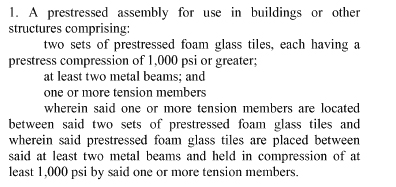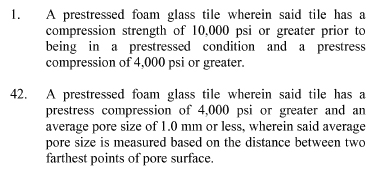ARE Patent Law Alert:

PTAB Reverses Examiner's Obviousness Rejections In Two Related Appeals Where Examiner Did Not Provide An Adequate Rationale For Combining References
November 30, 2012On November 30, 2012, the recently formed Patent Trial and Appeals Board (“PTAB”) issued two decisions in appeals in which they reversed the examiner’s obviousness rejections based on the examiner’s failure to satisfy the standard for obviousness articulated by the U.S. Supreme Court in KSR Int’l Co. v. Teleflex, Inc., 550 U.S. 398 (2007).
More specifically, the PTAB found that the examiner (1) failed to articulate adequate reasoning based on rational underpinning for the proposed prior art combinations; and (2) improperly relied on the “obvious to try” principle without providing “adequate reasoning or evidence to show that there are a finite number of identified, predictable solutions to solve a problem evidenced by design need or market pressure.” See Ex Parte Pedro M. Buarque de Macedo, Appeal No. 2010-008278, Appl. No. 11/ 607,412 (PTAB Nov. 30, 2012) (“Macedo I”); and Ex Parte Pedro M. Buarque de Macedo, Appeal No. 2011-000847, Appl. No. 10/625,102 (PTAB Nov. 30, 2012) (“Macedo II”).1
A. Macedo I
Both cases are based on related patent applications directed to prestressed, foam glass tiles to be used in building construction and assemblies made therefrom.
In Macedo I, the sole independent claim on appeal provided as follows:

Macedo I, Slip Op. at 2.
The Examiner had rejected this claim under 35 U.S.C. § 103(a) as unpatentable over combinations of four different sets of prior art references.
The PTAB concluded that the Examiner’s rejection was based on an improper combination of prior art references without an appropriately stated rationale for making such a combination. Moreover, it was recognized that “none of the cited references disclose prestress compression of 1,000 psi or greater on foam glass tile as recited in the claims.” Thus, the PTAB held that “[w]ithout a reasonable expectation of success in further modifying [the prior art structure] in order to arrive at the foam glass tile having a presstress compression of 1,000 psi or greater, the claimed subject matter would not have been obvious to one of ordinary skill in the art.” (Macedo I, at 4).
The PTAB also found that “the Examiner has not identified any particular prestress compression applied to the foamed glass materials” in the cited prior art references] and “the Examiner has also not identified any particular reason why [the cited prior art references] would cause one of ordinary skill in the art to apply a prestress combination in the claimed range of 1,000 psi or greater” to the prior art structure. (Macedo I, at 4-5).
In sum, the PTAB explained that “[t]he Examiner has not provided adequate reasoning with rational underpinning why a person of ordinary skill in the art would modify the arrangement of the prior art references to apply a prestress compression in the claimed range of 1,000 psi or greater. *** Without an articulated rationale based on rationale underpinning for modifying the prior art references as proposed, the Examiner’s rejection appears to be the result of impressible hindsight analysis.” (Macedo I, at 5).
Macedo I also rejected “the Examiner’s apparent reliance on the principle that the ‘claimed combination of elements was “obvious to try”’” as “unavailing to support a conclusion of obviousness.” (Macedo I, at 5). “The Examiner does not provide adequate reasoning or evidence to show that there are a finite number of identified, predictable solutions to solve a problem evidenced by design need or market pressure.” (Id.)
B. Macedo II
The claimed subject matter in Macedo II also relates to “prestressed, foam glass tiles to be used in building construction and assemblies made thereform.” (Macedo II, at 2). The PTAB identified the following independent claims as representative:

Id.
The Examiner had rejected these claims under 35 U.S.C. § 103(a) as unpatentable over combinations of four different sets of prior art references.
In overturning these rejections, the PTAB turned to the submitted Declaration of the Inventor, which explained that “by prestressing a product, the resulting compression strength of the prestressed product will decrease by the prestress amount while the resulting tension strength will increase by the same amount” (Id. at 3, citing App. Br. and Dr. Macedo Decl. ). Thus, Macedo II concluded “it may not necessarily be suitable to apply pre-compressive force to a workpiece in the claimed range depending on the desired compression strength characteristics of the resulting product.” (Macedo II, at 3).
Macedo II again relied upon the failure of the examiner to articulate a “logical reason” to apply the combination, and Appellant’s arguments to the contrary. Like Macedo I, Macedo II found that “[w] ithout a reasonable expectation of success in further modifying the [prior art structure] in order to arrive at the foam glass tiles having a prestress compression of 4,000 psi or greater, the claimed subject matter would not have been obvious to one or ordinary skill in the art.” (Macedo II, at 4). Likewise, Macedo II also found that “the Examiner has not identified any particular prestress compression applied to the foam glass materials” in the cited prior art references, and “[t]he Examiner has also not identified any particular reason why [the references] would cause one of ordinary skill in the art to apply a prestress compression in the claimed range of 4,000 psi or greater” to the prior art structure. (Id.).
In sum, Macedo II concluded that “[t]he Examiner has not provided adequate reasoning with rational underpinning why a person of ordinary skill in the art would modify the arrangement of the prior art references to apply a prestress compression in the claimed range of 4,000 psi or greater. *** Without an articulated rationale as based on rational underpinning for modifying the prior art references as proposed, the Examiner’s rejection appears to be the result of impermissible hindsight analysis.” (Macedo II, at 5).
Macedo II also rejected the Examiner’s apparent reliance on an “obvious to try” rationale since “[t] he Examiner does not provide adequate reasoning or evidence to show that there are a finite number identified, predictable solutions to solve a problem evidenced by design need or market pressure.” (Macedo II, at 5).
Practical Significance
Macedo I and Macedo II illustrate the importance of providing adequate reasoning at each step of obviousness analysis to satisfy the KSR standard:
(1) To support an obviousness conclusion based on a combination of prior art references, one must articulate adequate reasoning with rational underpinning for the proposed prior art combination. Otherwise, such combination may be considered to be the result of impermissible hindsight analysis.
(2) In addition, to support an obviousness conclusion based on the “obvious to try” principle, one must “provide adequate reasoning or evidence to show that there are a finite number of identified, predictable solutions to solve a problem evidenced by design need or market pressure.”
* Charles R. Macedo is a Partner and Jung Hahm is an associate at Amster, Rothstein & Ebenstein LLP. Their practice specializes in intellectual property issues including prosecuting and litigating patent, trademark and other intellectual property disputes. They may be reached at [email protected] and [email protected]
Mr. Macedo, along with Benjamin Halpern and Jung Hahm, associates at the firm, represented Dr. Macedo in prosecution and before the PTAB in both Macedo I and Macedo II.
View all ARELaw Alerts

Upcoming Events
-
April 23, 2024 – April 24, 2024
Research & Innovation in Healthcare 2024 ConferenceLocation: Baylor Scott & White Charles A. Sammons Cancer Center, Dallas, Texas (Registration Required)Speaker(s): Charles R. Macedo,
-
April 30, 2024 – May 2, 2024
AUTM Canadian Region Meeting 2024Location: Doubletree by Hilton Toronto Downtown, Toronto, Ontario (Registration Required)Speaker(s): Charles R. Macedo,
RSS FEED
Never miss another publication. Our RSS feed (what is RSS?) will inform you when new articles have been posted.
![]() Subscribe now!
Subscribe now!
